How Do You Leach A Garden Site To Lower Salts?
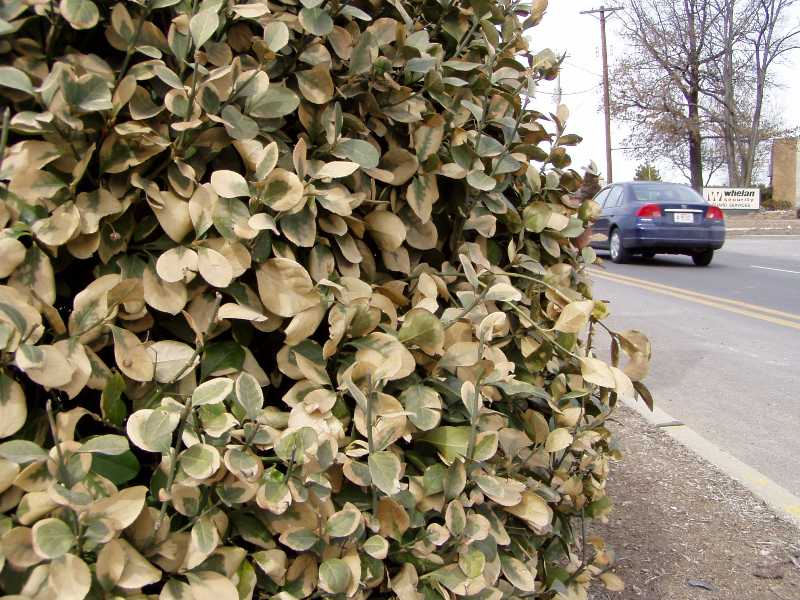 | Bleached foliage of euonymus (Euonymus) caused by salt spray |
Injury due to salt is most common on landscape plants growing adjacent to highways, streets, sidewalks, and driveways that are regularly salted during the winter for ice control. Most of the salt used for deicing purposes is sodium chloride, ordinary rock salt or table salt. On highways, the major problem to plants is caused by salt spray kicked up by fast moving traffic on wet, salted roads. The salt spray is deposited on adjacent plants causing dehydration of evergreen leaves. In the city, the major problem is salt runoff washing into the soil. Salt in the soil may be absorbed by the roots and cause direct toxic effects.
Symptoms and Diagnosis
Salt spray causes bud death and twig dieback. Subsequent shoot growth at the branch base produces clusters of twigs known as "witches' brooms." Symptoms typically become evident in the spring. In evergreens and conifers, salt spray causes leaf browning or yellowing, needle tip flecking, and twig dieback. Salt in the soil is slower acting and may not affect plants for several years. Symptoms include an initial blue green cast to the foliage, marginal leaf burn or needle tip burn, reduction in leaf, flower and fruit size, premature fall coloration and defoliation, stunting, and a general lack of vigor. The symptoms often become evident in late summer or during periods of hot dry weather.
Integrated Pest Management Strategies
1. Reduce salt use. The most important method of preventing salt injury to plants is reducing the amount of salt used for deicing. Pure salt should never be applied. Salt should always be mixed with an abrasive such as sand, cinders, or ash. This combines the melting power of the salt with the grittiness of the abrasive so less total salt is needed. Commercial deicing products containing calcium chloride may be used instead of rock salt. These products will not damage the soil but will still injure plants, so they too should be mixed with abrasives and applied with the same precautions.
2. Apply salt carefully. Application should be limited to high risk locations such as high speed roads, intersections, hills, steps, and walkways. Avoid spilling or applying in heaps.
3. Leach salted soils. If salt has already entered the soil, water these areas heavily in the spring to help leach the salt out of the soil. This method, however, is only effective on well-drained soils. It is not effective on fine textured, compacted soils where water does not drain readily.
4. Protect plants. Plants may be protected from salt spray by placing materials such as plastic, burlap, plywood, or window screen on or in front of them. This provides a physical barrier that prevents salt spray from contacting the plant.
5. Avoid planting in drainageways or in areas where runoff collects. Salt spray damage can be avoided by planting trees and shrubs away from the spray drift zone, at least 50 feet from a highway or further if downwind. Plants vary in their sensitivity to salt. It should be emphasized that even tolerant plants are not immune to injury.
| Salt Tolerant Trees | Salt Tolerant Shrubs | Salt Tolerant Evergreens |
|---|---|---|
| Norway maple European horsechestnut White ash Honeylocust Mountain ash | Winged euonymus Pfitzer juniper Mockorange Buckthorn Fragrant sumac | Eastern redcedar Colorado spruce Austrian pine |
Organic Strategies
Strategies 3, 4 and 5 are strictly organic approaches.
More images:
|
| ||||
|
| ||||
|
|
How Do You Leach A Garden Site To Lower Salts?
Source: https://www.missouribotanicalgarden.org/gardens-gardening/your-garden/help-for-the-home-gardener/advice-tips-resources/pests-and-problems/environmental/salt.aspx
Posted by: jacksonbabinfor.blogspot.com

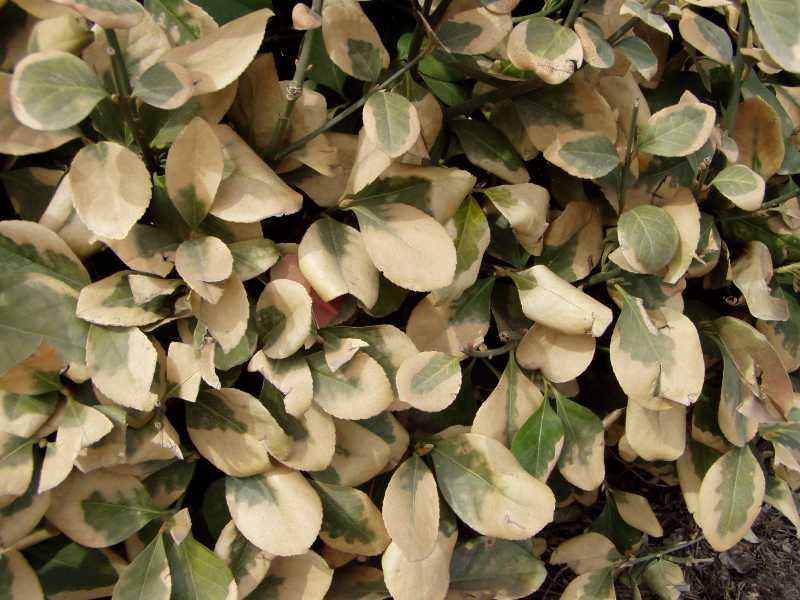
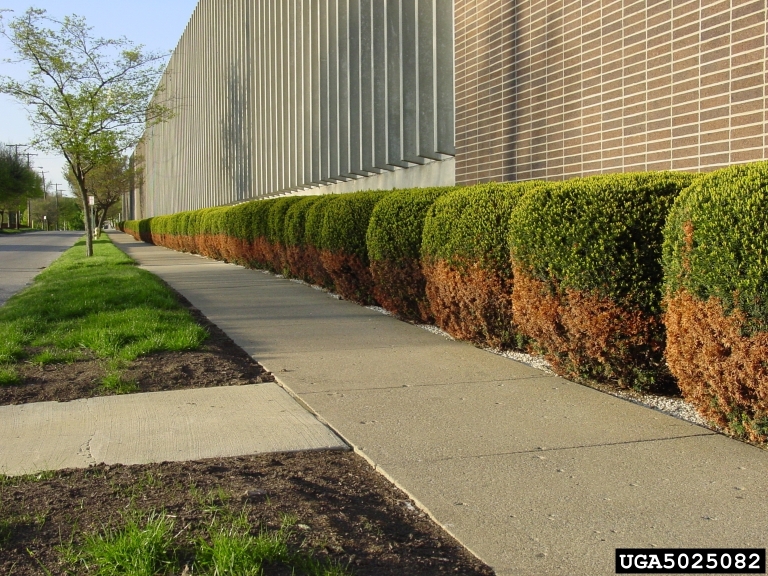
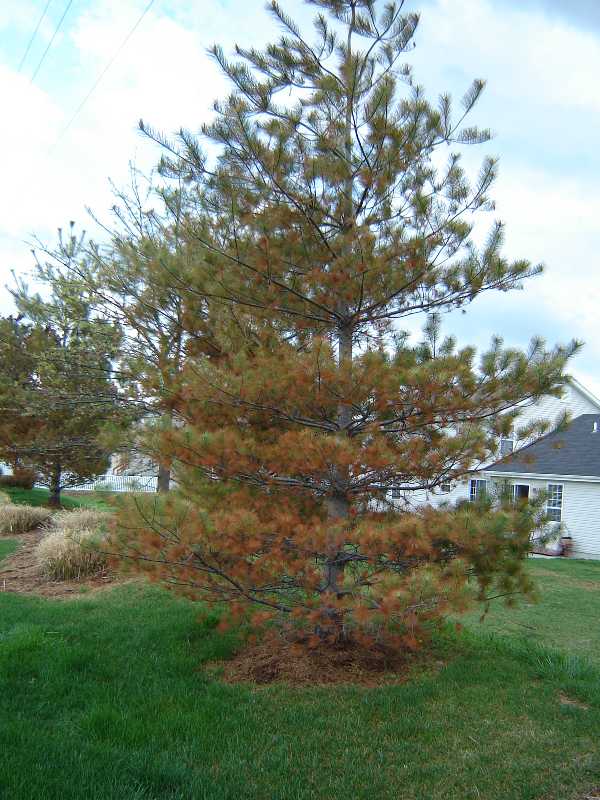
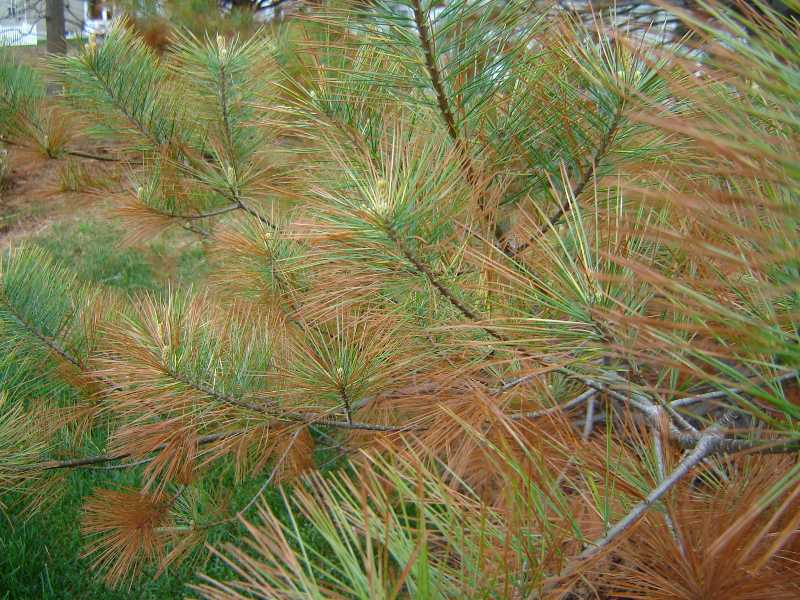
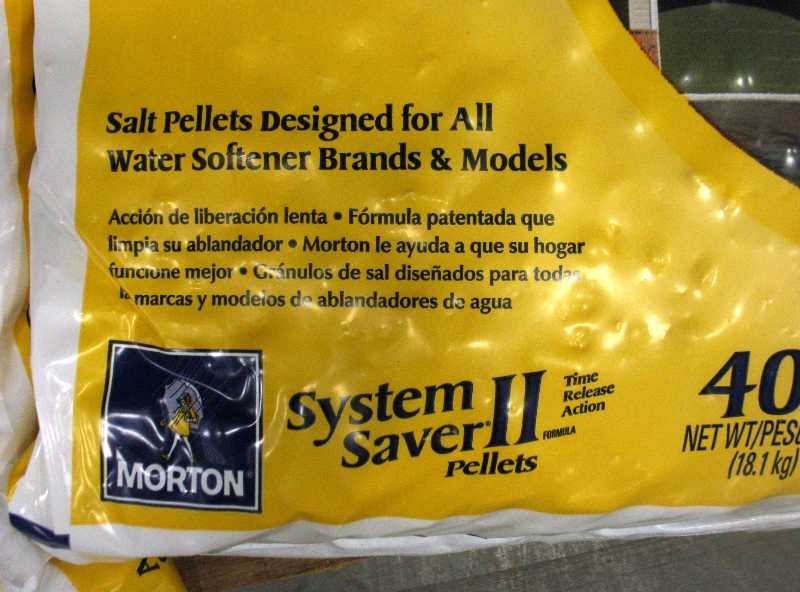
0 Response to "How Do You Leach A Garden Site To Lower Salts?"
Post a Comment